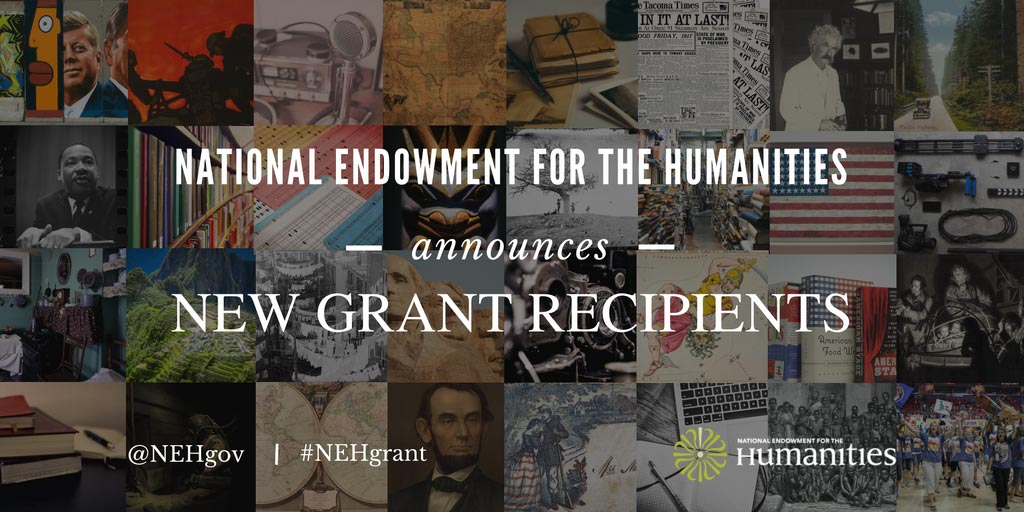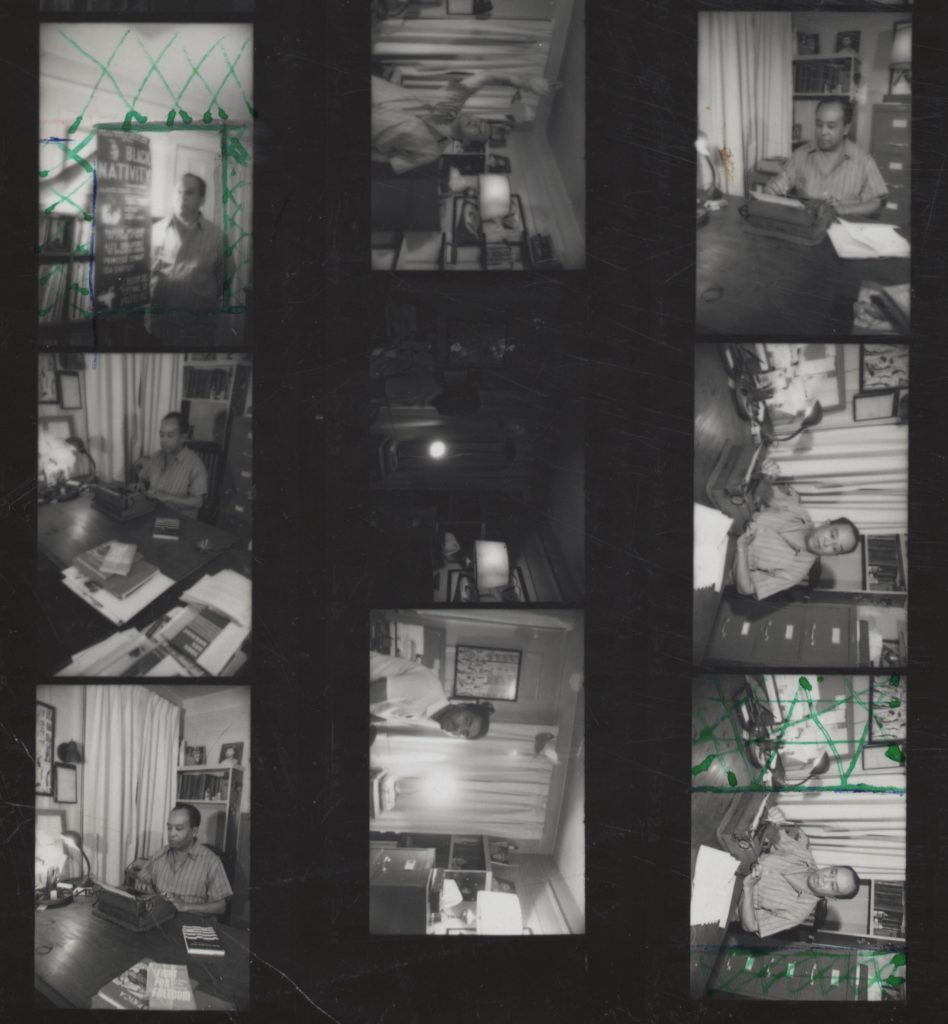NEH awards $173,833 grant to VMFA to digitize Louis Draper archive
Project will enhance access to works by leading 20th-Century African American artist
The National Endowment for the Humanities has awarded the Virginia Museum of Fine Arts a $173,833 grant to digitize, preserve and share its archive of photographs, negatives and other materials from Richmond-born photographer Louis Draper (1935–2002). In the 1960s and 1970s, Draper played an influential role in capturing the vantage point of African Americans during the civil rights era, elevating their photographic representation beyond stereotypes often depicted in popular media. In 1963, he was a founding member of the Kamoinge Workshop, a collective of African American photographers.
In March 2016, VMFA announced the acquisition of Draper’s archive, which is anchored by 2,822 photographs, 42,116 negatives, 748 contact sheets, 4,378 color and black-and-white slides, 36 computer-generated images, and 71 computer disks, as well as his camera equipment and more than 80 linear inches of valuable archival documents and publications. The museum had originally acquired 13 of his photographs in 2013.
“This significant addition to our collection recognizes our vision to put the VMFA in the forefront in collecting and disseminating the works of African American artists,” said Alex Nyerges, VMFA Director. “In just a few years, our museum has become the go-to venue for Draper’s amazing works, both as a photographer and as an educator. With this grant, we can ensure the preservation of these photographs and related materials for future generations to explore and learn from, as this archive offers an unparalleled window into a transformational moment in our nation’s history. Draper gave us a different and meaningful perspective each time he clicked the shutter on his camera.”
“Making art accessible is at the heart of VMFA’s mission, and this goes hand-in-hand with our strategic plan to expand our collection of African American art,” said Stephen D. Bonadies, VMFA’s Senior Deputy Director for Conservation and Collections, who will oversee the Draper digitization project. “This is our largest special collection and the first to consist of extensive and varied photographic and archival materials. Not only will this project allow us to improve our stewardship and care of these works, but it will also enable us to virtually share this incredible resource with visitors from across America and even the world.”
Two major art museums are borrowing works from VMFA’s Draper holdings. The Tate Modern in London will open Soul of a Nation: Art in the Age of Black Power in July 2017, while the Cleveland Museum of Art has Black in America: Louis Draper and Leonard Freed on display now. Locally, five of Draper’s prints—including two from the new archive—are included in A Commitment to the Community: The Black Photographers Annual – Volume 1, the first of a four-part exhibition series at VMFA that explores each of the four volumes of the Black Photographers Annual, a publication produced and edited by members of the Kamoinge Workshop and published between 1973 and 1980. That exhibition, on view until October 3, 2017, already has become a destination for a large number of visitors, including public school children.
“NEH provides support for projects across America that preserve our heritage, promote scholarly discoveries, and make the best of America’s humanities ideas available to all Americans,” NEH Chairman William D. Adams said. “We are proud to announce this latest group of grantees who, through their projects and research, will bring valuable lessons of history and culture to Americans.”
The grant is from the NEH’s Humanities Collections and Reference Resources program, which supports projects that provide an essential underpinning for scholarship, education, and public programming in the humanities. The program funds implementation, and planning and pilot projects. In this round of competition, the program awarded grants to 39 of the 224 applicants.
The Draper archive at VMFA is a valuable primary resource that will allow scholars, educators, curators, and the public to explore multiple humanities themes through Draper’s experience and work as an African American photographer—including his recognition of his photography as a form of “engaged resistance” that not only bore witness to leaders of the civil rights movement, but also offered a richer and more diverse perspective of African American life than provided by the mainstream media. Draper’s materials also include a significant portion on the early history of the Kamoinge Workshop and document his perspective on the professional challenges that he and the collective confronted in the process of finding publications that would publish photographs of African Americans made by African Americans. His photographs of significant 20th-century artists, writers, musicians, and performers reflect the wide array of personal connections that Draper made after moving to New York from Richmond, Virginia in 1957. Printed photographs and contact sheets in Draper’s archive show a broad view of city life and the everyday interactions between people and also offer a unique vision of African American neighborhoods in the 1960s and 1970s.
The grant will fund staff resources to digitize the archive and rehouse the photographs. Dedicated physical and digital storage will be built, and analog audiovisual and born-digital materials will be reformatted to contemporary digital standards. When the project is complete, the archive materials will be made accessible through a custom portal on the VMFA website. The museum also will create educational resources to teach adults and K-12 educators about Draper, the Kamoinge Workshop and their part in the history of photography. The 29-month project will start on July 1, 2017.
“Very rarely does a museum acquire such a comprehensive archive by an artist and his colleagues. This archive will allow us to tell an unprecedented story rooted here in our city and show Louis Draper’s relevance in so many different contexts,” said Dr. Michael Taylor, Chief Curator and Deputy Director for Art and Education. “This archive includes the artist’s extraordinary street photographs, the supporting documents of the Kamoinge Workshop, and everything else we need to tell a complete story. This is a major draw for VMFA, and, thanks to NEH’s support, our digitization effort will allow us to make this story accessible beyond the museum’s walls.”
In January 2020, to celebrate the launch of the online Draper archive, VMFA will host a major exhibition with a scholarly catalogue featuring Draper’s photographs, as well as works by other significant photographers that participated in the early years of the Kamoinge Workshop. Dr. Sarah Eckhardt, Associate Curator of Modern and Contemporary Art, will curate that exhibition.
Nell Draper Winston, Louis Draper’s sister, who initially approached VMFA about her brother’s photographs and archive, echoed her delight that this grant will allow more people to learn about his work and craft. “This project by VMFA will help elevate Louis’ work, starting right here in his hometown,” she said. “I’m proud that VMFA has recognized the value of this archive and has found a way to make Louis’ photography and experience available to everyone. My hope is that people will see the world through the lens of his camera and will go out and make their own contributions.”
In 2014, VMFA received a $40,000 grant from NEH to develop the technical requirements and workflow for the museum’s digitalization initiatives. The grant also supported efforts to digitize about 750 archival documents related to its Fabergé and Russian Decorative Arts collection.
About Louis Draper and The Kamoinge Workshop
Louis Draper was born and raised in Richmond, Va., and moved to New York City in 1957. He took classes at New York University’s Institute of Film and Television as well as at the New School for Social Research where he studied with the influential photographer Eugene Smith. He also established relationships with several major African American literary and artistic leaders, such as Langston Hughes and Roy DeCarava. In 1963, Draper was instrumental in forming the Kamoinge Workshop, a collective of African American photographers meeting in New York City. (The group’s name means “a group of people acting and working together” in Gikuyu, the language of the Kikuyu people of Kenya.) While the artists did not work alongside each other, they met weekly to show each other their work and frequently exhibited together. In 1982, the photographer Carrie Mae Weems credited the efforts of Draper and Kamoinge as “the first steps taken by black photographers to come together and form a comprehensive group that would address in photographic terms the description of being black in America.” While the group organized several shows in their own gallery space in the mid-1960s, they also had exhibitions at New York’s International Center for Photography and the Studio Museum in Harlem.
About the National Endowment for the Humanities
Created in 1965 as an independent federal agency, the National Endowment for the Humanities supports research and learning in history, literature, philosophy, and other areas of the humanities by funding selected, peer-reviewed proposals from around the nation. Additional information about the National Endowment for the Humanities and its grant programs is available at: www.neh.gov.
About the Virginia Museum of Fine Arts
The Virginia Museum of Fine Arts in Richmond, Virginia, is one of the largest comprehensive art museums in the United States. VMFA, which opened in 1936, is a state agency and privately endowed educational institution. Its purpose is to collect, preserve, exhibit, and interpret art, and to encourage the study of the arts. Through the Office of Statewide Partnerships program, the museum offers curated exhibitions, arts-related audiovisual programs, symposia, lectures, conferences, and workshops by visual and performing artists. In addition to presenting a wide array of special exhibitions, the museum provides visitors with the opportunity to experience a global collection of art that spans more than 5,000 years. VMFA’s permanent holdings encompass more than 35,000 artworks, including the largest public collection of Fabergé outside of Russia, the finest collection of Art Nouveau outside of Paris, and one of the nation’s finest collections of American art. VMFA is home to important collections of English silver and Impressionist, Post-Impressionist, British sporting, and modern and contemporary art, as well as renowned South Asian, Himalayan, and African art. In May 2010, VMFA opened its doors to the public after a transformative expansion, the largest in its 80-year history. The Virginia Museum of Fine Arts is the only art museum in the United States open 365 days a year with free general admission. For additional information, telephone 804-340-1400 or visit www.vmfa.museum.
*NEH does not endorse the products or services mentioned in this material. For further information please see: Website Disclaimers.

